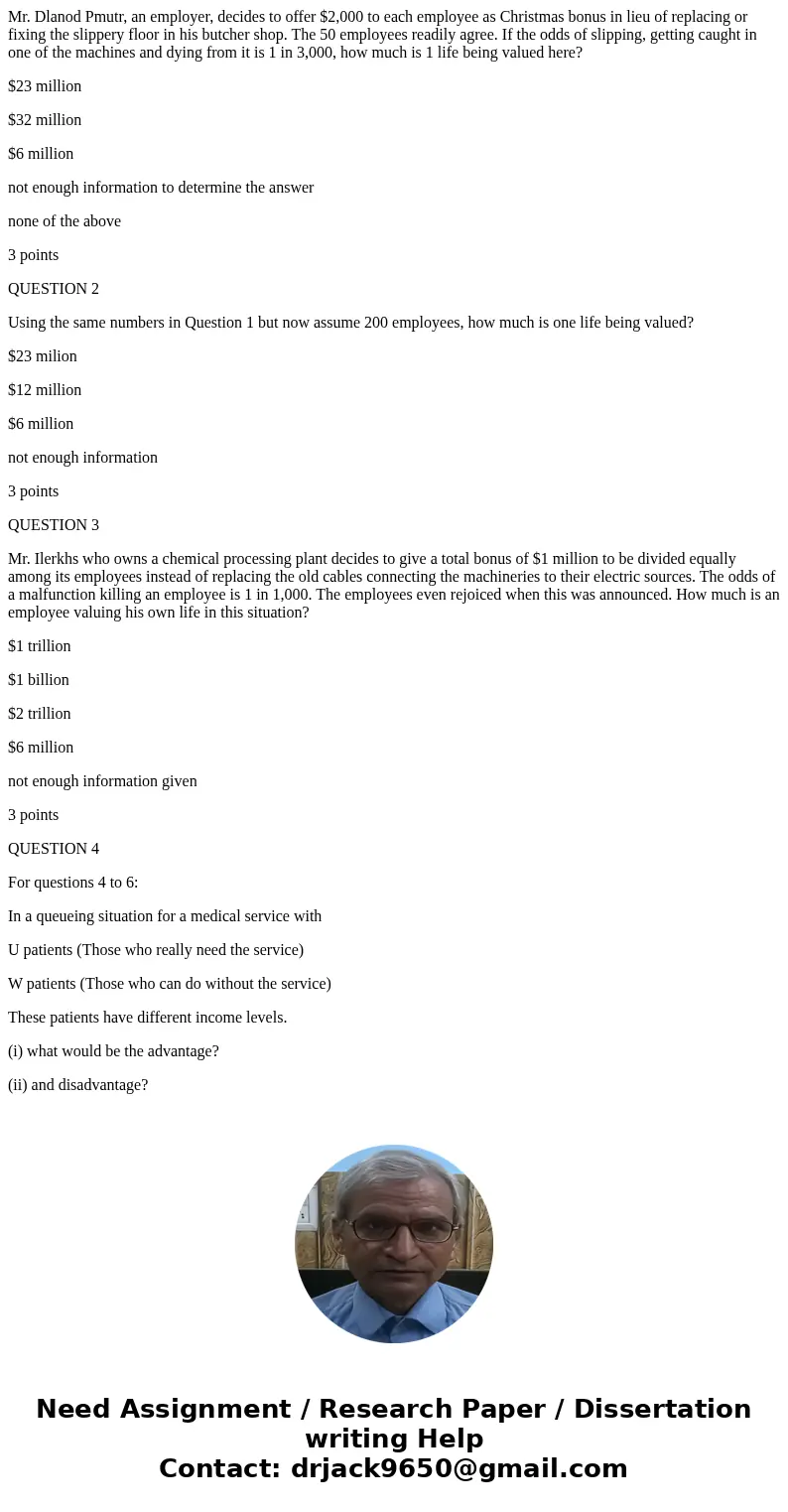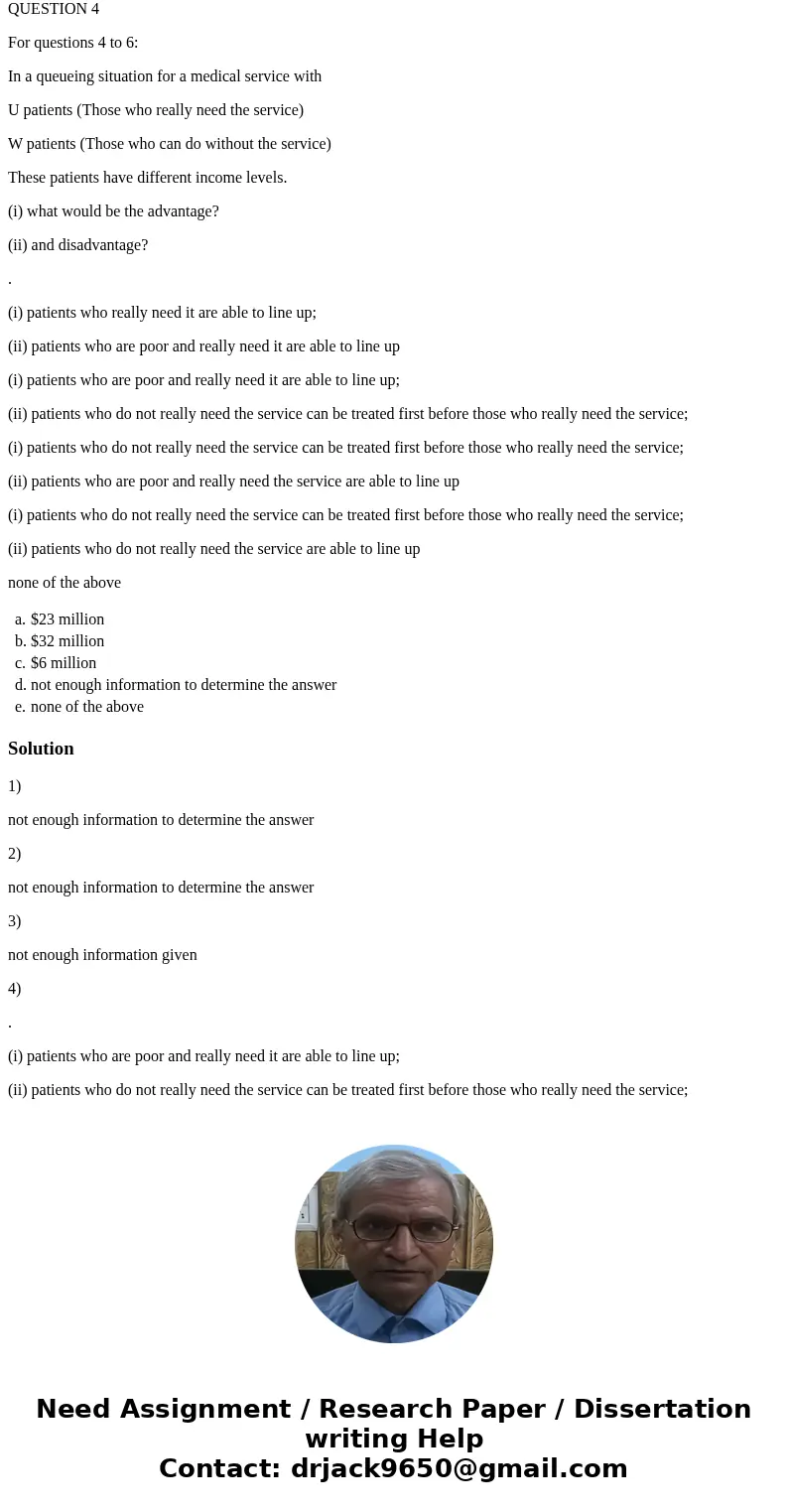Mr Dlanod Pmutr an employer decides to offer 2000 to each em
Mr. Dlanod Pmutr, an employer, decides to offer $2,000 to each employee as Christmas bonus in lieu of replacing or fixing the slippery floor in his butcher shop. The 50 employees readily agree. If the odds of slipping, getting caught in one of the machines and dying from it is 1 in 3,000, how much is 1 life being valued here?
$23 million
$32 million
$6 million
not enough information to determine the answer
none of the above
3 points
QUESTION 2
Using the same numbers in Question 1 but now assume 200 employees, how much is one life being valued?
$23 milion
$12 million
$6 million
not enough information
3 points
QUESTION 3
Mr. Ilerkhs who owns a chemical processing plant decides to give a total bonus of $1 million to be divided equally among its employees instead of replacing the old cables connecting the machineries to their electric sources. The odds of a malfunction killing an employee is 1 in 1,000. The employees even rejoiced when this was announced. How much is an employee valuing his own life in this situation?
$1 trillion
$1 billion
$2 trillion
$6 million
not enough information given
3 points
QUESTION 4
For questions 4 to 6:
In a queueing situation for a medical service with
U patients (Those who really need the service)
W patients (Those who can do without the service)
These patients have different income levels.
(i) what would be the advantage?
(ii) and disadvantage?
.
(i) patients who really need it are able to line up;
(ii) patients who are poor and really need it are able to line up
(i) patients who are poor and really need it are able to line up;
(ii) patients who do not really need the service can be treated first before those who really need the service;
(i) patients who do not really need the service can be treated first before those who really need the service;
(ii) patients who are poor and really need the service are able to line up
(i) patients who do not really need the service can be treated first before those who really need the service;
(ii) patients who do not really need the service are able to line up
none of the above
| a. | $23 million | |
| b. | $32 million | |
| c. | $6 million | |
| d. | not enough information to determine the answer | |
| e. | none of the above |
Solution
1)
not enough information to determine the answer
2)
not enough information to determine the answer
3)
not enough information given
4)
.
(i) patients who are poor and really need it are able to line up;
(ii) patients who do not really need the service can be treated first before those who really need the service;


 Homework Sourse
Homework Sourse